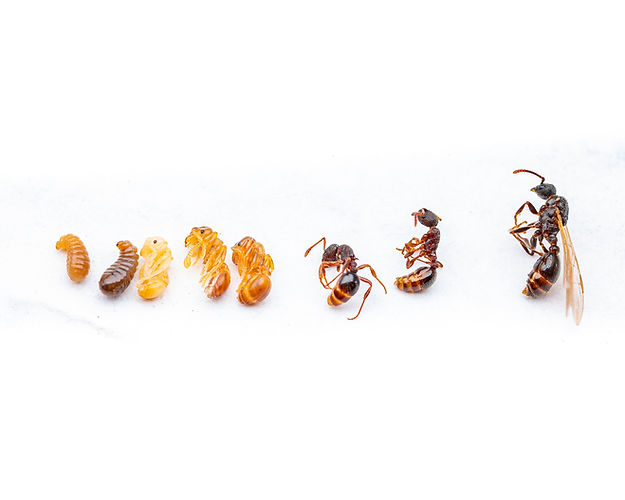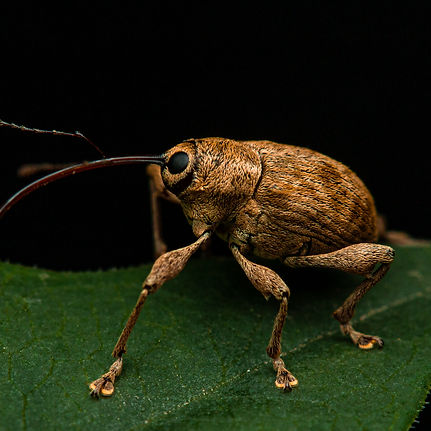
The Kentucky Ant Project
Documenting the ants of Kentucky

We research the lives of some of Kentucky's smallest residents. Our goal is to understand every ant species in Kentucky, know what it does to help support the state, and understand why they are here. We report new species, document new behaviors on old ones, and share the fascinating stories that unfold in the world of Kentucky's ants

Our Story
When I (Josiah) came to Morehead State University in 2022, I knew I was going to study ants. I had already become an ant expert in the state of Colorado, working on and creating a book on the stinging ants of Colorado. Before I traveled for twenty-one hours and twelve thousand miles to Morehead, I wondered what kind of ants I would be working with in Kentucky.
As an enterprising ant scientist, I knew the two places to look. Antmaps was the first place to look, and it listed around 75 species. The UI of the site made this amount look significant, and at first, I didn't think much of it, but after about 10 minutes, I gave the number some thought and felt that it did not seem correct. I had only been working on a portion of the ants in Colorado, and my list ended up having over 190 species... How could Kentucky only have 75? Especially when I look at biodiversity maps that show the region as one of the brightest hotspots in the US? Something wasn't right here.
More research followed, and I found that Kentucky regularly reports less than half of the species reported in the surrounding states. A figure that might disturb Kentuckians: I also found that Ohio has about 50 more species reported than Kentucky, and Tennessee has nearly double. This shouldn't be correct, not because the rivalry between these states is influential over the ant world, but because Kentucky has remarkably similar habitats to both states. I thought Kentucky should have more species than Ohio because it is further south and therefore receives more solar energy, which in turn allows for more biological niches. This data shows us one thing: Kentucky (and West Virginia) is severely undersampled, underresearched, and overlooked.

As an effort to remedy this problem. I started the Kentucky Ant Project. This has grown significantly since the genesis of the project. Now, with a team of 8+ individuals, we work to understand the ants of Kentucky and educate Kentuckians about their importance. We study the diversity, genetics, and biology of Kentucky ants.
Importance of Ants
OK Josiah, ants are undersampled in Kentucky, who cares... That doesn't impact me, my horses, my 3 cats, and my 10 acres of sorghum/soybean fields...
Maybe you feel that way, but ant research like this can be a big deal for the average Kentuckian. For example, we encountered a new species of Solenopsis, right on campus. Members of this genus have been reported to be a major sorghum pest, and the Formica palledefulva that wander your soybean crops probably has an impact on your crop yield. Except the problem is, we can't really tell you that right now because we don't even know what species are in our state. What if the Solenopsis species reported to be a sorghum pest is a different species? What if the Formica glacialis that wander these appalachian mountain ranges perform some unique and important role in pollination, that is not recorded because they are mislabed as Formica subsericea...
OK Josiah, ants are undersampled in Kentucky, who cares... That doesn't impact me, I work a white collar job, care for my kids, and need to worry about feeding them, and don't work outside.
When you go horseback riding or hiking with your family in the spring, you see so many beautiful wildflowers, and we don't actually know how most of them are pollinated. We think bees do a lot of this work, but there are plants with flowers so small that I've only seen Monomorium and small gnats contribute to their pollination. You may think that these little pantry pests don't do much for you, but beneath the treetops, whole logs dissolve into the ground with the help of Aphaenogaster, Camponotus, and Lasius. Miniature underground ranching operations activate mycorrhizal networks and may cause forest-wide effects. Harvesting caches from Pheidole and Aphaenogaster spring up at random intervals, moving seeds often specifically designed to be spread by ants. Deep within the soils of the forest floor, Camponotus americanus, Aphaenogaster lamellidens, and Lasisus americanus colonies pull up scarcely accessed minerals to the soil surface, which are washed out in the next rainstorm. A sunflower in the community garden in your yard avoids consumption by a squirrel because it is overflowing with angry little Crematogaster pilosula ants that sting the squirrel and scare him off.
So as you chew sunflower seeds, cook cornbread in sunflower oil, eat maypop jam, enjoy native persimmons, pawpaws, cherries, blackberries, and eat a juicy burger on the porch with your family, you can thank the ants that were (or weren't there). Ants influence the food we produce.
OK Josiah, ants are undersampled in Kentucky, who cares... That doesn't impact me, I hate insects and have nothing but dislike and disgust for ants.
Sure, you are afraid of insects, you hate spiders and bees. Maybe you were stung by a bee at a young age and someone made fun of you... Maybe you spent $100+ on a picnic date (idk) just to turn around or run and play frisbee for a bit and suddenly what seems like an army of massive Camponotus workers is carrying off your fancy cheeses, expensive fruits, and local honey dipped pastries. Whether you like it or not, ant diversity impacts you. You experienced it at the picnic, you experience it when you cringe at the sight of an ant in a bathroom or on the sidewalk. You experience it when invasive Chinese needle ants invade more of the state and displace native, elusive, and non-stinging species you don't see. Because evem when you don't like to see insects, you are impacted when they become less diverse.

Everyone is impacted by ants.
Everyone can benefit from knowing more about ants.
The Kentucky Ant Project exists to do that.

Meet The Team
Support Us With Services
Here at the Kentucky Ant Project, we do many things as a part of the effort to sample the state's ants, but we do not recieve very much university funding. One way you can support us is by purchasing some special services from us.











